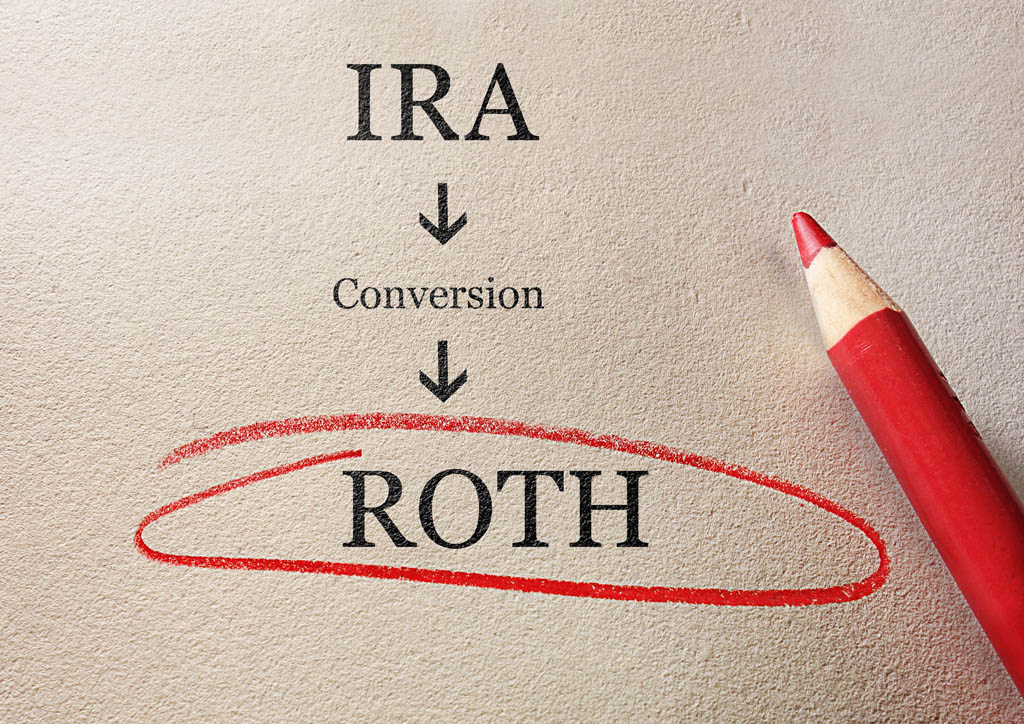4 Things to Know About Backdoor Roth IRA Conversions
Vladimir Kouznetsov, EA, CFP®
November 15, 2018
Backdoor Roth conversion may not be the best strategy to use in all situations.

A backdoor Roth IRA conversion is a way of funding a Roth IRA account with a traditional IRA conversion instead of a direct contribution.
People with relatively high incomes are unable to directly contribute to a Roth IRA. In 2018, the limitation starts at $120,000 for single taxpayers and $189,000 for married filing jointly. To get around this issue, they can make a non-deductible contribution to a traditional IRA, then perform a Roth conversion. Unlike Roth IRAs, traditional IRAs do not have income limits affecting someone’s ability to contribute funds.
For years, analysts have argued if this strategy is truly allowable and if it can create problems at tax time. In 2018, Congress put this debate to rest by acknowledging the validity of the backdoor Roth conversion strategy. Congress stated, “Although an individual with AGI exceeding certain limits is not permitted to make a contribution directly to a Roth IRA, the individual can make a contribution to a traditional IRA and convert the traditional IRA to a Roth IRA.”
If you are considering using the backdoor Roth strategy to contribute additional funds to your Roth IRA, there are a few things you need to know:
1. You Must Be Under Age 70.5
You need to be under the age of 70.5 to contribute to a traditional IRA. Unlike Roth IRA contributions, contributions to traditional IRAs are limited by age. Once you reach age 70.5, you cannot add new funds to a traditional IRA and instead need to start taking required minimum distributions.
2. Your Income Impacts Your Contributions
Contributions to IRAs are limited by the amount of earned income during the year. Earned income is what you receive as your salary by working for a company or the self-employment income you are earning from your own business. If you are not working but your spouse is, your spouse’s income is included.
Other types of income, like dividends, interest, rent you collect, capital gains, royalties, etc., do not count. If all your income is passive or portfolio income, you may want to look at other strategies to fund your Roth IRA account. (For related reading, see: 4 Best Passive Income Investments.)
3. Pro-Rata Rules Still Apply
The backdoor Roth strategy works best when you do not have pre-tax funds in any traditional IRAs you own. Mixing pre-tax and after-tax funds inside a traditional IRA will trigger the pro-rata rule. Then, when doing a Roth conversion, you will be converting some pre-tax and some after-tax funds and will need to pay ordinary income tax on the pre-tax portion of the conversion.
Putting after-tax funds in a separate traditional IRA does not help since all traditional IRAs are treated as one for this rule. However, pre-tax funds in a company retirement plan, like a 401(k), do not count.
4. It Is Still a Conversion, not a Contribution
Funds added to your Roth IRA using this strategy are converted funds, not contributions. Roth IRAs have different tax treatments for contributed and converted funds.
Contributions can be withdrawn from the account at any time without triggering any tax consequences. Conversions, on the other hand, need to stay in the account for five years before they can be withdrawn penalty-free. Withdrawing funds before the five-year limit will trigger a 10% penalty on the withdrawal amount. The five-year limit is separate for each conversion.
A Backdoor Roth IRA Conversion Is Not for Everyone
Be aware that you are paying taxes at contribution time and have limited access to the funds for several years, which means a backdoor Roth conversion may not be the best strategy to use in all situations. You should consider other strategies as well to evaluate which would benefit you the most in your current situation. In some years, increasing contributions to your employer retirement plan or establishing a different individual or small business plan may be a better choice.
A Roth IRA is a great way to save for retirement. Funds inside Roth IRAs grow tax-deferred, and qualified distributions from that account are tax-free. Having tax-free income at retirement may help you to reduce your taxable income and the impact of stealth taxes. Tax-free income is a great way to reduce uncertainty about the impact of future tax rate changes on your retirement income.
This information has been derived from sources believed to be accurate. Please note - investing involves risk, and past performance is no guarantee of future results. The publisher is not engaged in rendering legal, accounting or other professional services. If assistance is needed, the reader is advised to engage the services of a competent professional. This information should not be construed as investment, tax or legal advice and may not be relied on for the purpose of avoiding any Federal tax penalty. This is neither a solicitation nor recommendation to purchase or sell any investment or insurance product or service, and should not be relied upon as such. All indices are unmanaged and are not illustrative of any particular investment.
Recent updates



Understanding the Ins and Outs of Workplace 401(k) Plans


Similar stories
Latest articles from the "Tax Strategies" category.